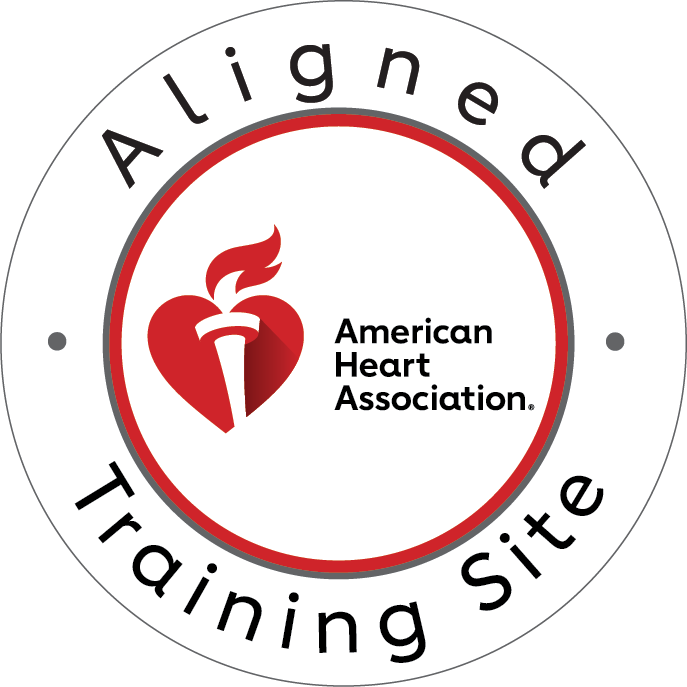I. Introduction
In the realm of healthcare, preparedness is paramount, especially when it comes to addressing pediatric emergencies. Amidst the chaos and urgency that often accompany such situations, healthcare providers must possess the knowledge, skills, and confidence to deliver timely and effective care to pediatric patients. This is where Pediatric Advanced Life Support (PALS) certification plays a pivotal role.
A. Brief explanation of PALS certification
PALS certification is a specialized training program designed to equip healthcare professionals with the expertise needed to respond to pediatric emergencies with precision and confidence. Developed by the American Heart Association (AHA) and other medical organizations, PALS certification goes beyond basic life support (BLS) training to focus specifically on the unique needs of pediatric patients during critical situations.
B. Importance of pediatric emergency preparedness
Pediatric emergencies, ranging from respiratory distress to cardiac arrest, require swift and expert intervention to optimize outcomes. Unlike adult patients, children have distinct physiological characteristics and responses to medical interventions, necessitating specialized training for healthcare providers. In these critical moments, every second counts, making the ability to recognize and address pediatric emergencies efficiently a matter of life and death.
II. What is PALS Certification?
A. Definition of PALS (Pediatric Advanced Life Support)
Pediatric Advanced Life Support (PALS) is a comprehensive training program designed to equip healthcare providers with the knowledge and skills necessary to manage pediatric emergencies effectively. It encompasses a systematic approach to assessing and treating critically ill or injured children, focusing on resuscitation, stabilization, and the provision of advanced life support interventions.
B. Who typically seeks PALS certification?
PALS certification is sought by a wide range of healthcare professionals who may encounter pediatric emergencies in their clinical practice. This includes but is not limited to pediatricians, emergency physicians, nurses, paramedics, respiratory therapists, and other allied healthcare providers working in pediatric units, emergency departments, or critical care settings.
C. Overview of the training and certification process
PALS training typically consists of a combination of didactic instruction, hands-on skills practice, and simulation-based scenarios. The curriculum covers core topics such as pediatric assessment, airway management, cardiac rhythm recognition, pharmacology, and team dynamics. Upon completion of the course, participants must pass a written exam and demonstrate proficiency in practical skills to obtain PALS certification.
D. Key skills and techniques covered in PALS training
PALS training equips healthcare providers with essential skills and techniques for managing pediatric emergencies, including
Pediatric assessment: Systematic evaluation of pediatric patients to identify signs of respiratory distress, shock, or cardiac arrest.
Airway management: Techniques for establishing and maintaining a patent airway in pediatric patients, including bag-mask ventilation, endotracheal intubation, and supraglottic airway devices.
Cardiac rhythm recognition: Interpretation of pediatric cardiac rhythms and appropriate interventions for arrhythmias, bradycardia, and pulseless arrest.
Defibrillation and cardioversion: Safe and effective use of defibrillation and synchronized cardioversion in pediatric patients with life-threatening arrhythmias.
Pharmacology: Administration of medications commonly used in pediatric resuscitation, including dosing, indications, contraindications, and adverse effects.
By mastering these skills and techniques, PALS-certified healthcare providers are better equipped to deliver timely and effective care to pediatric patients in critical situations, ultimately improving patient outcomes and survival rates.
By mastering these skills and techniques, PALS-certified healthcare providers are better equipped to deliver timely and effective care to pediatric patients in critical situations, ultimately improving patient outcomes and survival rates.
III. Importance of PALS Certification
A. Critical nature of pediatric emergencies
Pediatric emergencies pose unique challenges due to the distinct anatomy, physiology, and pathophysiology of children compared to adults. Children have smaller airways, faster metabolic rates, and different responses to medications, making their care more complex. Additionally, pediatric emergencies can escalate rapidly, requiring prompt intervention to prevent deterioration and optimize outcomes.
B. Specialized care required for pediatric patients
Unlike adult patients, children require specialized care tailored to their age, size, and developmental stage. This includes adjustments in medication dosages, equipment sizes, and procedural techniques to ensure safety and efficacy. Without proper training and preparation, healthcare providers may struggle to manage pediatric emergencies effectively, leading to delays in treatment and potential harm to patients.
C. Role of PALS certification in improving outcomes for pediatric patients
PALS certification plays a crucial role in improving outcomes for pediatric patients by ensuring that healthcare providers have the knowledge, skills, and confidence to respond to emergencies promptly and effectively. PALS-certified providers are trained to recognize early warning signs, initiate appropriate interventions, and coordinate team-based resuscitation efforts to optimize patient outcomes.
D. Legal and professional considerations for healthcare providers
In addition to the clinical benefits, PALS certification carries legal and professional implications for healthcare providers. Many healthcare facilities require PALS certification as a condition of employment, particularly for roles involving pediatric care or emergency medicine. Furthermore, PALS certification demonstrates a commitment to excellence in patient care and may enhance career advancement opportunities for healthcare providers.
By emphasizing the critical nature of pediatric emergencies, the specialized care required for pediatric patients, the role of PALS certification in improving outcomes, and the legal and professional considerations for healthcare providers, it becomes evident why PALS certification is essential in today’s healthcare environment. In the next sections of this article, we will explore who benefits from PALS certification, the impact of PALS certification on patient care, and the ongoing education and renewal requirements for PALS certification.
IV. Who Benefits from PALS Certification?
A. Healthcare professionals directly involved in pediatric care
Pediatricians: Specialists in pediatric medicine who provide primary and specialized care to children from infancy through adolescence.
Emergency Physicians: Physicians who specialize in the evaluation and treatment of acute and emergent medical conditions, including pediatric emergencies.
Pediatric Nurses: Registered nurses who specialize in providing nursing care to pediatric patients in various healthcare settings.
Paramedics: Emergency medical personnel trained to provide prehospital care, including assessment, treatment, and transportation of patients to medical facilities.
B. Emergency medical personnel
Emergency Medical Technicians (EMTs): Healthcare providers trained to provide basic life support (BLS) and emergency medical care in prehospital settings.
Paramedics: Advanced-level emergency medical personnel who can administer medications, perform advanced airway management, and initiate advanced life support interventions.
C. Nurses, physicians, and paramedics
Critical Care Nurses: Registered nurses who specialize in providing care to critically ill or injured patients in intensive care units (ICUs) and other critical care settings.
Intensive Care Physicians: Physicians who specialize in the management of critically ill patients in ICUs and other critical care units.
Flight Nurses and Flight Paramedics: Nurses and paramedics who provide medical care during aeromedical transport of patients via helicopter or fixed-wing aircraft.
Transport Nurses and Paramedics: Healthcare providers who accompany critically ill or injured patients during interfacility transports.
D. Individuals working in pediatric units, emergency departments, or urgent care centers
Pediatric Intensive Care Units (PICUs): Specialized units within hospitals that provide intensive care to critically ill or injured pediatric patients.
Pediatric Emergency Departments: Emergency departments that specialize in the evaluation and treatment of pediatric patients with acute and emergent medical conditions.
Urgent Care Centers: Healthcare facilities that provide immediate medical care for non-life-threatening illnesses and injuries, including pediatric patients.
By obtaining PALS certification, healthcare professionals in these roles can enhance their knowledge, skills, and confidence in managing pediatric emergencies, ultimately improving patient outcomes and safety. In the following section, we will explore the impact of PALS certification on patient care and the role of PALS-certified providers in improving outcomes for pediatric patients.
V. The Impact of PALS Certification on Patient Care
A. Timely recognition of pediatric emergencies
PALS-certified healthcare providers are trained to recognize early signs and symptoms of pediatric emergencies, allowing for prompt intervention and prevention of further deterioration.
Early recognition of pediatric emergencies enables healthcare providers to initiate appropriate interventions and mobilize resources efficiently, optimizing patient outcomes.
B. Proficiency in life-saving interventions
PALS certification equips healthcare providers with the knowledge and skills necessary to perform life-saving interventions such as airway management, cardiopulmonary resuscitation (CPR), defibrillation, and medication administration in pediatric patients.
Proficiency in these interventions is critical for stabilizing pediatric patients in emergency situations and improving their chances of survival and recovery.
C. Enhanced teamwork and communication during pediatric resuscitations
PALS training emphasizes the importance of effective teamwork and communication in pediatric resuscitation scenarios.
PALS-certified providers learn to collaborate seamlessly with other healthcare team members, including physicians, nurses, respiratory therapists, and paramedics, to coordinate resuscitation efforts and optimize patient care.
D. Reduced morbidity and mortality rates among pediatric patients
Studies have shown that hospitals with higher rates of PALS-certified healthcare providers have better outcomes for pediatric patients, including lower morbidity and mortality rates.
By improving the quality of care provided to pediatric patients during emergencies, PALS certification contributes to better overall outcomes and patient safety.
By emphasizing the impact of PALS certification on timely recognition of pediatric emergencies, proficiency in life-saving interventions, enhanced teamwork and communication, and reduced morbidity and mortality rates among pediatric patients, it becomes evident that PALS certification plays a crucial role in improving patient care and outcomes in pediatric emergency settings. In the next section, we will discuss PALS certification renewal and ongoing education requirements to ensure that healthcare providers maintain their competency in pediatric resuscitation skills over time.
VI. PALS Certification Renewal and Ongoing Education
A. Importance of staying current with PALS guidelines and protocols
Pediatric resuscitation guidelines and protocols are subject to periodic updates and revisions based on the latest evidence and best practices.
Healthcare providers must stay informed about changes in PALS guidelines to ensure that their knowledge and skills remain current and aligned with best practices in pediatric resuscitation.
B. Renewal requirements for PALS certification
- PALS certification expires after a set period, of two years, necessitating renewal to maintain certification status.
- Renewal requirements may include completion of a PALS renewal course, passing a written exam, and demonstrating proficiency in practical skills through hands-on evaluation.
C. Continuing education opportunities for PALS providers
- Healthcare providers can participate in a variety of continuing education opportunities to enhance their knowledge and skills in pediatric resuscitation.
- Continuing education options may include online courses, workshops, conferences, simulation-based training, and case-based discussions.
D. Resources for staying updated on pediatric resuscitation guidelines
- The American Heart Association (AHA) and other professional organizations offer a wealth of resources to help healthcare providers stay updated on pediatric resuscitation guidelines and best practices.
- These resources may include textbooks, online modules, practice guidelines, reference cards, and mobile applications.
By emphasizing the importance of staying current with PALS guidelines and protocols, renewal requirements for PALS certification, continuing education opportunities for PALS providers, and resources for staying updated on pediatric resuscitation guidelines, healthcare providers can ensure that they maintain their competency in pediatric resuscitation skills over time. This commitment to ongoing education and professional development is essential for delivering high-quality care to pediatric patients in emergency settings and improving patient outcomes.
VII. Conclusion
In conclusion, Pediatric Advanced Life Support (PALS) certification is an essential component of pediatric emergency preparedness, providing healthcare providers with the knowledge, skills, and confidence needed to respond effectively to pediatric emergencies. By emphasizing early recognition of pediatric emergencies, proficiency in life-saving interventions, enhanced teamwork and communication, and reduced morbidity and mortality rates among pediatric patients, PALS certification plays a crucial role in improving patient care and outcomes in pediatric emergency settings.
Furthermore, healthcare providers must recognize the importance of staying current with PALS guidelines and protocols, completing renewal requirements for PALS certification, participating in continuing education opportunities, and utilizing resources to stay updated on pediatric resuscitation guidelines. This commitment to ongoing education and professional development ensures that healthcare providers maintain their competency in pediatric resuscitation skills over time, ultimately enhancing patient safety and quality of care.
In today’s healthcare environment, where pediatric emergencies demand swift and expert intervention, PALS certification serves as a cornerstone of pediatric emergency preparedness, empowering healthcare providers to deliver optimal care to pediatric patients when they need it most. By investing in PALS certification and ongoing education, healthcare providers can make a meaningful difference in the lives of pediatric patients and their families, ensuring that every child receives the best possible care during times of crisis.




